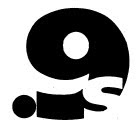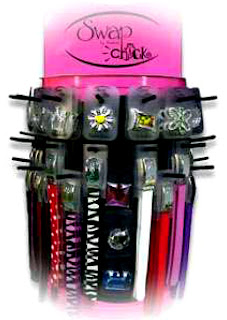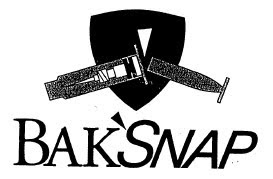Here's a brace of recent TTAB genericness rulings that will put you to the TTAB test. The first involves a refusal to register the term
MOCCA for "coffee product, namely, coffee beans, and not including coffee-bean derived coffee." [Does that identification of goods make sense?]. In the second, the term
SMOKELESS LOG was refused registration for “artificial fireplace logs." How do you think these appeals came out?
 In re Barrie House Coffee Co., Inc.
In re Barrie House Coffee Co., Inc., Serial No. 76695202 (April 11, 2011) [not precedential]. First, the Board reversed the PTO's refusal to accept as a specimen of use, a rubber stamping of the word MOCCA on a piece of paper, since
Applicant's CEO verified that the stamp is used to affix the mark to packaging for the goods. The Board observed that the Examining Attorney was "not in a position to doubt the veracity of applicant's statement."
However, the Board then sustained the PTO's objection to the indefiniteness of the identification of goods. [
See Rule 2.32(a)(6), which requires that the application set forth the "particular goods"]. The Board found the phrase "and not including coffee-bean derived coffee" to be "non-sensical and vague in the context of the identification of goods. The identification includes
only 'coffee beans' so it is illogical to exclude coffee from that identification."
Turning to the issue of genericness, the Examining Attorney submitted four dictionary definitions of the word "mocha" as "a rich pungent Arabian coffee," and three website excerpts describing the mocha coffee bean. She contended that MOCCA is merely a slight misspelling of "mocha" and does not create a different connotation or pronunciation.
The Board focused on the "definite portion of the identification of goods,
i.e., applicant's goods are coffee beans." Deeming the genus of goods to be coffee beans, it concluded that the public will understand "mocha" as identifying a type of coffee bean; therefore "mocha" is generic for coffee beans." [I thought "mocha" was a coffee-chocolate flavor -
ed.].
The question, then, was whether MOCCA is also generic for coffee beans. The Board concluded that the misspelling of the generic term "mocha" as MOCCA is immaterial, and that for consumers "who even notice the misspelling, MOCCA will be understood as naming the 'mocha' coffee bean."
The words MOCCA and “mocha” differ by only one letter in the middle/latter part of each word. The accepted pronunciation of “mocha,” noted in the Random House Dictionary excerpt, is with the “ch” having a soft “k” sound. MOCCA is likely to have the same pronunciation as “mocha,” regardless of whether it is the accepted pronunciation or another pronunciation. There is no evidence that MOCCA would be understood as having a different connotation from “mocha.”
And so the Board affirmed the genericness refusal.
 In re Michael Weinberger
In re Michael Weinberger, Serial No. 77915887 (April 14, 2011) [not precedential]. As stated in a recent
TTABlog genericness posting (
here), for compound words,
In re Gould Paper Corp., 5 USPQ2d 1110 (Fed. Cir. 1987), says that dictionary definitions alone may suffice to prove genericness, provided that the compounding of the constituent words does not yield a different meaning. For phrases,
In re American Fertility Society, 51 USPQ2d 1832 (Fed. Cir. 1999), requires evidence of the meaning accorded to the phrase as a whole by the relevant purchasing public. But sometimes it seems that the Board will bend the tests like the proverbial nose of wax in order to reach what it considers the correct result. [
See, for example, In re Wm. B. Coleman Co., Inc., 93 USPQ2d 2019 (TTAB 2010) [precedential] (ELECTRIC CANDLE COMPANY held to be generic under both tests)].
Here, the Board found SMOKELESS LOG to be "more analogous to the compound word considered in
Gould than it is to the phrase considered by the court in
American Fertility. See, for example, In re William B. Coleman Co."
In this case, the terms comprising the proposed mark SMOKELESS LOG include the adjective SMOKELESS followed by the noun LOG which it clearly modifies. As such, SMOKELESS and LOG form a union of words, notwithstanding the space between its component terms.
Based on dictionary definitions of "smokeless" and "log," the Board concluded that SMOKELESS LOG "may be defined as a portion or length of a tree trunk or limb that, presumably when burned, emits or produces little or no smoke." The Examining Attorney also submitted website excerpts in which the term "smokeless log" appears.
The Board found the genus of goods to be "artificial fireplace logs," and concluded that SMOKELESS LOG is understood by the relevant public to refer to "at least a subset of that genus of goods."
Applicant argued that the website excerpts point to his own goods, but the Board observed that these materials "show use of SMOKELESS LOG as a generic term as applied to applicant's goods." Moreover, "the fact that other terms, such as 'smokeless artificial logs' or 'logs that produce no smoke' are also available to competitors to use as generic designators for such goods does not diminish the genericness of SMOKELESS LOG."
TTABlog questions and comments: How does the frequently-repeated tenet that "there is no correct pronunciation of a mark" apply here, when the Board discusses the likely pronunciation of MOCCA?
Note that the Board took judicial notices of a definition of "mocha." Why didn't it take judicial notice of the word "rooter" in the recent ROOTER, M.D. case (
here), when there was no evidence submitted as to the meaning of "rooter?"
Finally, in both decisions, the Board refers to the term at issue as a "mark," and says that the question is whether the mark is generic. I think that is a nonsequitur. If it's generic, it's not a mark. I prefer to say that the question is whether the "term" or "phrase" or "designation" or "applied-for mark" or "alleged mark" is generic. What do you think? Am I just being too pedantic or persnickety?
Text Copyright John L. Welch 2011.





































